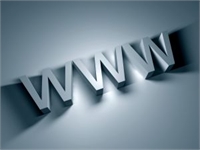
The Basics of Building Links with HTML
Important Notice: Our web hosting provider recently started charging us for additional visits, which was unexpected. In response, we're seeking donations. Depending on the situation, we may explore different monetization options for our Community and Expert Contributors. It's crucial to provide more returns for their expertise and offer more Expert Validated Answers or AI Validated Answers. Learn more about our hosting issue here.

The Basics of Building Links with HTML
You must be logged in to post a comment.
What is a link?
A link refers to a string of text– or a graphic– on a Web page, that when clicked, will lead you to a different page on the site, a different section of the same page, or to a different Website. The word, phrase or image that is turned into a clickable link is called anchor text.
Types of Links
There are three common types of links used in Web design.
How to Build an HTML Link Using Anchor Text
There are three main parts to an HTML link.
To demonstrate each part of a link, take a look at the examples below. The tags used to tell the browsers it is a link are in bold black type, the url is in red, and the anchor text is in blue.
This is an example of an HTML text link that points to the home page of a site
<a href="http://www.website-name.com">Anchor Text</a>
This is an example of an HTML text link that points to an interior page of a site
<a href="http://www.website-name.com/page-name.html">Anchor Text</a>
What is the NoFollow Attribute?
Adding a nofollow attribute to your HTML link tells the Search Engine robots that the link is not approved. This means the Search Engines will follow the link, but they will not consider it relevant when assigning Page Rank or link popularity to the site it links to.
How and When to Use the NoFollow Attribute
The nofollow attribute should be used when you link to affiliate sites, when selling ad space on your site, or when you need to link to a page on or off your Website that you don’t want to pass any Page Rank to.
Adding the nofollow tag to HTML links is simple. The examples below demonstrate a link with and without the nofollow attribute.
A link without the nofollow attribute looks like this…
<a href="http://www.website-name.com/">Anchor Text Here</a>
A link with the nofollow attribute attached looks like the following…
<a href="http://www.website-name.com/" rel="nofollow">Anchor Text Here</a>
How to Use a Link to Jump to Another Section on the Same Page
There are two parts to using links to jump to new sections on the same page. Whether you want to place a link at the bottom of the page to return visitors to the top or you want to link to a specific section of the page for visitors looking for certain information or details, the process is the same.
Example of the link:
<a href="#anchor-name">Your Anchor Text Here</a>
The "#anchor-name" can be anything you want it to be. I generally use a single word as close to the anchor text as possible.
The replace Your Anchor Text Here with the anchor text you want to use for the link.
Now that you have the link formatted, it’s time to make the anchor that the visitor will return to. It looks like this:
<a name="anchor-name">Your Anchor Text Here</a>
Replace "anchor-name" with the exact same word you used in your link, without the #
The text you will place within the tags to replace Your Anchor Text Here should be a word or words from the specific section of the page you want to link to.
For example, if you have written a page about monarch butterflies, and you want a link to jump down the page for visitors looking specifically for monarch butterfly pictures. Your link and anchor might look like the following.
This is the link
<a href="#gallery">monarch butterfly gallery</a>
This is the Anchor for the link
<a name="gallery">Monarch Butterfly Gallery</a>
While basic link creation is easy, it’s often just as easy to forget the important role they play in building a successful presence on line. And even more important is the practice of using proper anchor text, whenever possible, in all the links you build.
Using relevant keywords as anchor text is the single most beneficial link building strategy you can use to boost site rankings, link popularity, and overall Website traffic.